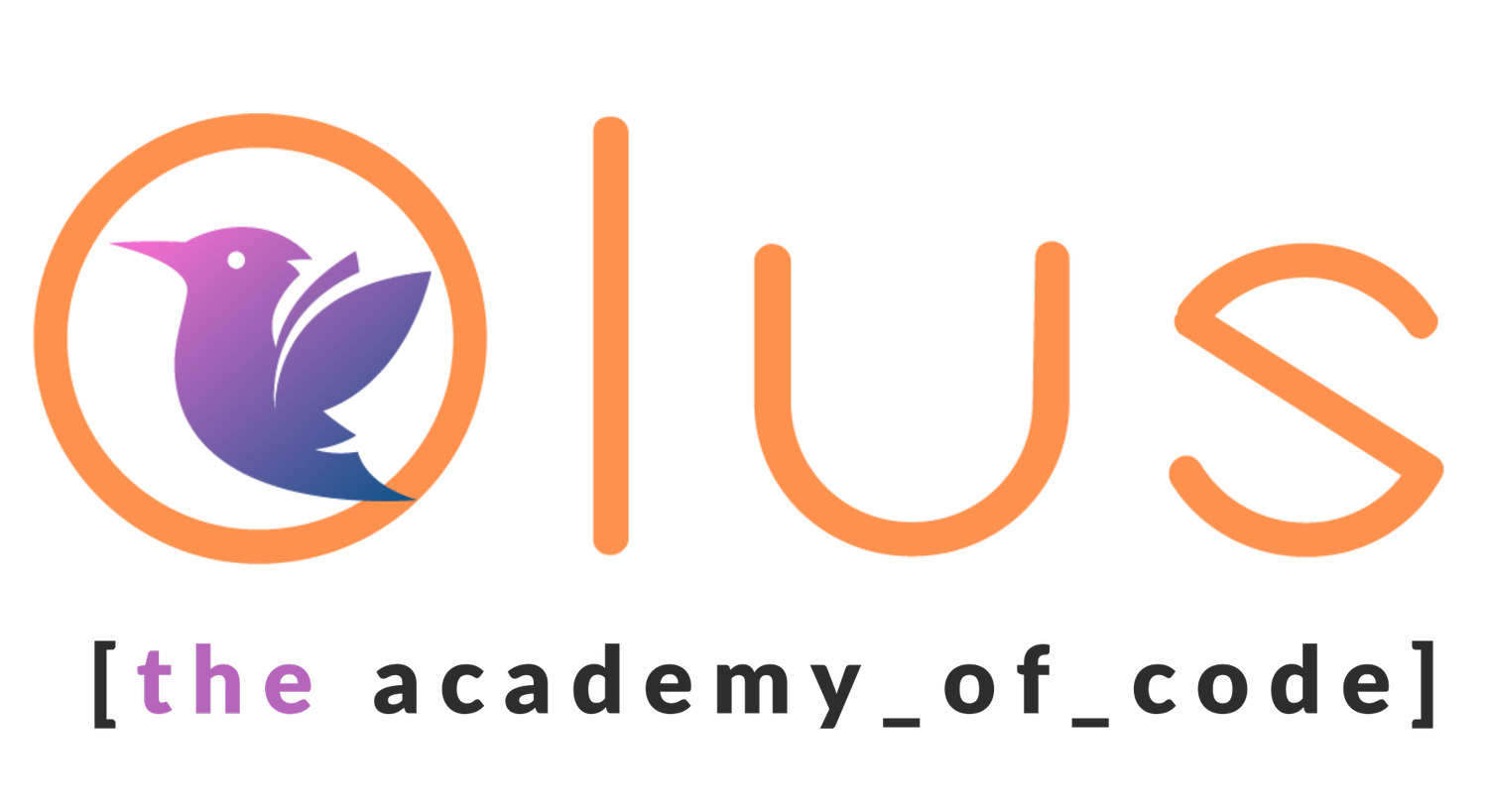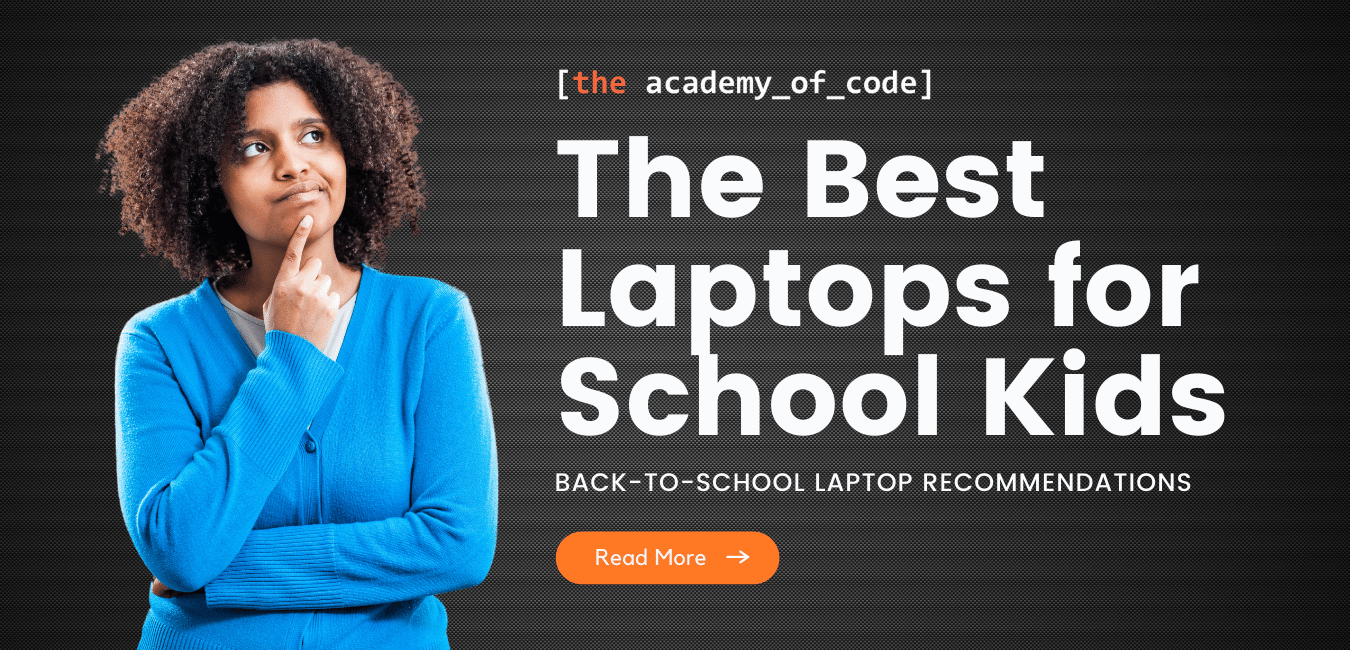Laptop recommendations for aspiring coders!
With the new academic school year fast approaching and a busy school year ahead, you’ll want to be comfortable knowing that your laptop is taken care of! Here are a couple of laptop recommendations to get you started.
Generally speaking, we would usually recommend spending approximately €600-€850 on a laptop. You certainly can get laptops for less, but they are often false economies and usually it’s worth spending the extra couple of hundred quid to get something that will last! For our courses, we also don’t allow the use of Chromebooks or tablets (iPads & Android), so do be aware of this if you’re thinking about joining our classes 😊
Samsung Galaxy Book
Price: €769
Samsung’s entry level Galaxy Book is a solid and relatively sleek 15.6 inch model that covers all the basics really well. It’s a lot lighter than most laptops (1.6kg) meaning you or your child won’t need to break your back carrying it around from home to school.
The configuration that costs €769 comes with the latest (11th gen) Intel i5 processor, 8GB of Ram and 256GB of storage. There’s a good selection of ports & connections, including two USB-C slots. one USB-A, a full size HDMI a headphone port (for those Zoom calls) and a MicroSD memory card slot.
Battery life is decent at about 5-6 hours hours between charges. The display isn’t touchscreen but it’s non-glare 108p resolution offers a crisp picture for you to keep an eye on your lines of code!
Lastly, at time of writing you get a free pair of Samsung Buds (€179 RRP) when you purchase this laptop & who doesn’t love free stuff!
Microsoft Surface Laptop Go
Price: €739
The 12.4 inch Surface laptop Go is a relatively cheaper model when compared with other Surface options. The biggest attractions of this model are design related. It comes in a choice of 3 colours and is very light (only 1.1kg). It also has a relatively good battery life squeezing out 7-8 hours of on-the-go charge.
The main attraction is of course the touchscreen that works with several stylus models including Mircosoft’s Surface Pen (RRP €115) to the much more affordable Timovo Pen (RRP €35).
It’s also powered using a USB C connection - meaning the charging plug doesn’t need to be a monstrosity of a thing, it can be a simple USB-C(PD) charger.
The main con is the lack of ports. There’s only one USB-C port on the laptop, and one USB-A and a 3.55mm headphone jack. If you envision needing more ports, you’ll likely also need to invest in a dongle adaptor.
It’s also worth flagging that if memory is what you’re looking for, you might be somewhat limited with the base 128GB model, but you will have the option (for a fee) of upgrading to the 256GB model.
In short, this is a great laptop to turn on out of the box and simply get started - whether that be for study or work. It’s light and effective, and comes in at a relatively competitive price point.
Dell Inspiron 15 3000
Price: €649
If there was an all round solid performer, the Dell Inspiron 15 3000 would be it. Although in certain aspects in can feel a little dated quality-wise (e.g. mediocre 720p webcam and 1.9kg weight) - it has a solid keyboard, good screen size (15.6 inch), and the specs will allow you to handle pretty much any task school or college (or coding classes!) can throw at you.
It comes with 8GB of RAM and the latest Intel i5 processor - plus with 256GB of storage, you’ll have plenty of room for saving your work and projects.
If photography or videography is your thing, this model might be useful as it comes with a full-sized memory card reader and a HDMI port. Although you might think these adaptors are industry standard, many modern laptops have removed them and now ask you to pay for dongle adaptors in order to get this functionality (Apple, we’re looking at you…).
The Intel i5 (11th Gen) model also has both types of USB ports as well as a joint headphone/microphone port.
Macbook Air M1 Chip
Price: €999+
The MacBook Air with M1 chip starts at €999 (with no add-ons or upgrades) and is Apple’s entry-level laptop, sitting below the MacBook Pro with M1 that starts at €1,299. These are the first models in Apple’s move away from traditional Intel x86 processors to arm-based chips similar to those used in iPhones and iPads.
The baseline entry model comes with a 13.3” LCD screen and the bullet fast M1 chip. The M1 is faster than any other laptop chip, rivalling the most high-powered desktop chips, while being very power-efficient. 8GB of RAM and 256GB of flash storage also helps add to the computer’s speed. The 720p webcam is a little disappointing when compared to the laptops overall quality, but isn’t the end of the world. It’s also very light, weighing only 1.29kg - which is a lot of power packed into a slim machine.
The battery life is also exceptional, with up to 16 hours of working time without needing a charge - meaning you can code away to your heart’s content! Although the laptop is certainly not cheap, you are paying for quality, and quality is certainly what you will get.

























